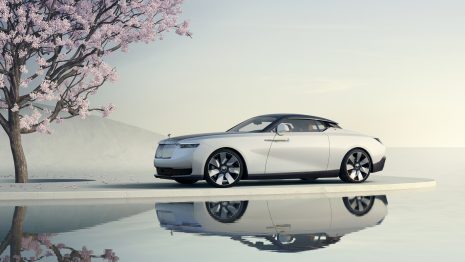Aston Martin DB5 turn 60
The iconic Aston Martin DB5 has reached a remarkable milestone, celebrating its 60th anniversary with Aston Martin at the helm of the festivities.
It’s been exactly 60 years since Aston Martin introduced the DB5, a car that would go on to become a symbol of British culture, design, and innovation. The DB5 solidified Aston Martin’s reputation as one of Britain’s most coveted luxury brands.
Today, the DB5 remains one of the world’s most recognizable and iconic cars. It took center stage at the Goodwood Revival festival in Sussex last weekend, alongside the latest addition to the DB lineage, the world’s first Super Tourer, DB12. To commemorate this significant anniversary, images of both models have been released, celebrating Aston Martin’s rich history and promising future.
Reflecting on the enduring appeal of the DB5 as it marks its 60th anniversary, Aston Martin’s Executive Chairman, Lawrence Stroll, who is also a proud DB5 owner, said, “The DB5 laid the foundations of our identity as a British luxury brand synonymous with style, performance, and exclusivity during the David Brown era. As it turns 60, we take a moment to look back and reflect on this car’s incredible role in our storied 110-year heritage. We’re incredibly proud that the DB lineage continues today with the critically acclaimed DB12, which, like those that came before it, celebrates all the aspects we love about British hand-built sports cars, infused with the latest technology and peak performance.”
In the 1960s, the DB4 had been selling well since its debut in 1958, but to maintain Aston Martin’s leading position among luxury sports car makers, something new was required. In September 1963, the DB5 made its official public debut at the Frankfurt Motor Show, showcasing various design, technical, and equipment improvements over its predecessor. Most notably, it featured a significant engine development, delivering even more power, which justified the use of the new DB5 name, now synonymous with style and desirability.
The DB5 quickly gained a reputation and fame that have made it one of the most sought-after cars of all time. Its association with James Bond, driven by the world’s most famous secret agent in a series of movies, solidified its place in automotive history. But it wasn’t just 007 who drove this iconic Aston Martin. During the Swinging Sixties, many famous actors, pop stars, and celebrities joined the exclusive ranks of Aston Martin ownership.
Celebrated DB5 owners in the 1960s included Sir Paul McCartney and George Harrison of The Beatles, as well as Mick Jagger of the Rolling Stones. Comedian Peter Sellers also owned one, and numerous notable figures in the years since, from Robert Plant and Jay Kay to Elle MacPherson and Ralph Lauren, have ensured that both saloon and convertible versions of the DB5 remained in the spotlight. This celebrity appeal helped propel Aston Martin from a niche British sports car maker to a global automotive superstar.
The production numbers of the DB5 were modest, with just 887 saloons, 123 convertibles, and 12 bespoke coach-built shooting brakes originally produced. These numbers were relatively small, especially compared to the over 1.8 million cars produced in the UK in 1963.
The DB5 introduced a new 4.0-liter engine, providing 282 bhp in standard form, a significant increase in power from its predecessor. Technical and equipment enhancements, such as electric windows and optional air conditioning, were introduced to meet the evolving expectations of sophisticated customers.
Performance was impressive, with a top speed exceeding 150 mph, making the DB5 the fastest regular four-seat GT car in the world at the time. Aston Martin proudly declared, “The DB5 is the fastest regular 4-seat GT car in the world.” British car magazine The Autocar praised it, stating, “This is a car that cries out to be driven, to be driven well, and to be driven far.”
The DB5 laid the foundation for subsequent Aston Martin models, with today’s DB12, the world’s first Super Tourer, once again reaffirming Aston Martin’s leadership in performance, dynamics, engineering, and technology.





















